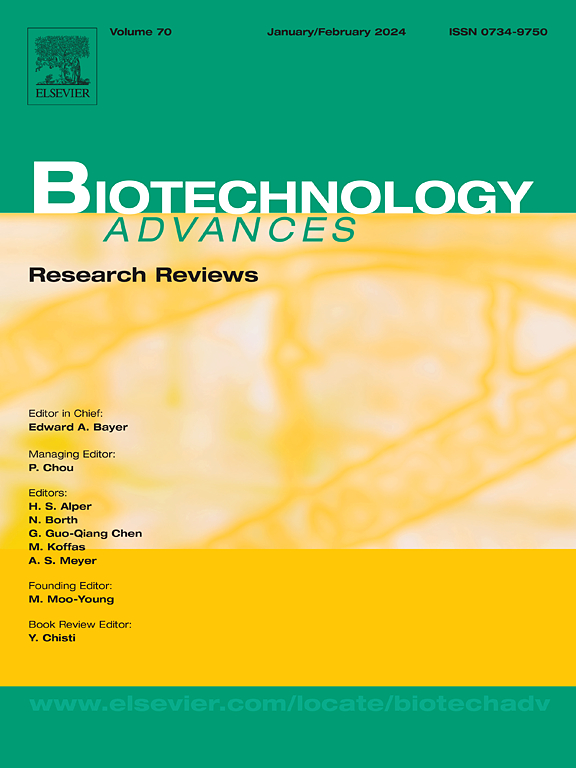CRISPR/Cas-powered nucleic acid amplification and amplification-free biosensors for public safety detection: Principles, advances and prospects
IF 12.1
1区 工程技术
Q1 BIOTECHNOLOGY & APPLIED MICROBIOLOGY
引用次数: 0
Abstract
Rapid, accurate, cost-effective, and efficient ultrasensitive detection strategies are essential for public health safety (including food safety, disease prevention and environmental governance). The CRISPR/CRISPR-associated (Cas) detection is a cutting-edge technology that has been widely used in the detection of public health safety due to its targeted cleavage properties (signal amplification), attomolar level sensitivity, high specificity (recognizing single-base mismatches), and rapid turnover time. However, the current research about CRISPR/Cas-based biosensors is not clear, such as mechanism problem and application differences of integrating CRISPR/Cas system with other technologies, and how to further innovate and develop in the future. Therefore, further detailed analysis and comparative discussion of CRISPR/Cas-based biosensors is needed. Currently, CRISPR/Cas system powered biosensors can be mainly categorized into two types: CRISPR/Cas system powered nucleic acid amplification biosensors and CRISPR/Cas system powered nucleic acid amplification-free biosensors. The two biosensors have different characteristics and advantages. This paper first provides an in-depth investigation of the enzymatic mechanism of CRISPR/Cas system at the molecular level. Then, this paper summarizes the principles and recent advances of CRISPR/Cas system powered nucleic acid amplification biosensors and CRISPR/Cas system powered nucleic acid amplification-free biosensors and discusses their integration mechanisms in depth. More, the differences and application-oriented between the two biosensors are further discussed. Finally, the application orientation and future perspectives of the two biosensors are discussed, and unique insights into the future development of CRISPR/Cas system are provided.
用于公共安全检测的CRISPR/ cas驱动的核酸扩增和无扩增生物传感器:原理、进展与展望
快速、准确、具有成本效益和高效的超灵敏检测战略对公共卫生安全(包括食品安全、疾病预防和环境治理)至关重要。CRISPR/CRISPR-associated (Cas)检测是一项前沿技术,由于其靶向切割特性(信号放大)、原子摩尔级灵敏度、高特异性(识别单碱基错配)和快速的转换时间,已广泛应用于公共卫生安全检测。然而,目前基于CRISPR/Cas的生物传感器的研究尚不明确,如CRISPR/Cas系统与其他技术集成的机制问题、应用差异、未来如何进一步创新发展等。因此,需要对基于CRISPR/ cas的生物传感器进行更详细的分析和比较讨论。目前,CRISPR/Cas系统驱动的生物传感器主要分为两类:CRISPR/Cas系统驱动的核酸扩增生物传感器和CRISPR/Cas系统驱动的核酸不扩增生物传感器。这两种生物传感器具有不同的特点和优势。本文首先在分子水平上对CRISPR/Cas系统的酶促机制进行了深入的研究。然后,综述了CRISPR/Cas系统驱动的核酸扩增生物传感器和CRISPR/Cas系统驱动的核酸无扩增生物传感器的原理和最新进展,并深入探讨了它们的集成机制。进一步讨论了两种生物传感器的区别及其应用方向。最后,讨论了两种生物传感器的应用方向和未来前景,并对CRISPR/Cas系统的未来发展提供了独特的见解。
本文章由计算机程序翻译,如有差异,请以英文原文为准。
求助全文
约1分钟内获得全文
求助全文
来源期刊

Biotechnology advances
工程技术-生物工程与应用微生物
CiteScore
25.50
自引率
2.50%
发文量
167
审稿时长
37 days
期刊介绍:
Biotechnology Advances is a comprehensive review journal that covers all aspects of the multidisciplinary field of biotechnology. The journal focuses on biotechnology principles and their applications in various industries, agriculture, medicine, environmental concerns, and regulatory issues. It publishes authoritative articles that highlight current developments and future trends in the field of biotechnology. The journal invites submissions of manuscripts that are relevant and appropriate. It targets a wide audience, including scientists, engineers, students, instructors, researchers, practitioners, managers, governments, and other stakeholders in the field. Additionally, special issues are published based on selected presentations from recent relevant conferences in collaboration with the organizations hosting those conferences.
 求助内容:
求助内容: 应助结果提醒方式:
应助结果提醒方式:


